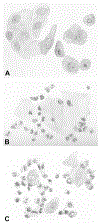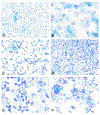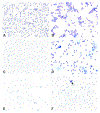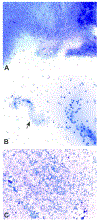Vaginal Cytology of the Laboratory Rat and Mouse: Review and Criteria for the Staging of the Estrous Cycle Using Stained Vaginal Smears
- PMID: 25739587
- PMCID: PMC11504324
- DOI: 10.1177/0192623315570339
Vaginal Cytology of the Laboratory Rat and Mouse: Review and Criteria for the Staging of the Estrous Cycle Using Stained Vaginal Smears
Abstract
Microscopic evaluation of the types of cells present in vaginal smears has long been used to document the stages of the estrous cycle in laboratory rats and mice and as an index of the functional status of the hypothalamic-pituitary-ovarian axis. The estrous cycle is generally divided into the four stages of proestrus, estrus, metestrus, and diestrus. On cytological evaluation, these stages are defined by the absence, presence, or proportion of 4 basic cell types as well as by the cell density and arrangement of the cells on the slide. Multiple references regarding the cytology of the rat and mouse estrous cycle are available. Many contemporary references and studies, however, have relatively abbreviated definitions of the stages, are in reference to direct wet mount preparations, or lack comprehensive illustrations. This has led to ambiguity and, in some cases, a loss of appreciation for the encountered nuances of dividing a steadily moving cycle into 4 stages. The aim of this review is to provide a detailed description, discussion, and illustration of vaginal cytology of the rat and mouse estrous cycle as it appears on smears stained with metachromatic stains.
Keywords: diestrus; estrus; metestrus.; proestrus.
© 2015 by The Author(s).
Figures



















References
-
- Allen E The oestrous cycle in the mouse. (1922) Am J Anat 30, 297–371.
-
- Astwood EB (1939). Changes in the weight and water content of the uterus of the normal adult rat. Am J Physiol 126, 162–70.
-
- Blandau RJ, Boling JL, and Young WC (1941). The length of heat in the albino rat as determined by copulatory response. Anat Rec 79, 453–63.
-
- Butcher RL, Collins WE, and Fugo NW (1974). Plasma concentration of LH, FSH, prolactin, progesterone and estradiol-17β throughout the 4-day estrous cycle of the rat. Endocrinology 94, 1704–8. - PubMed
Publication types
MeSH terms
Substances
Grants and funding
LinkOut - more resources
Full Text Sources
Other Literature Sources

